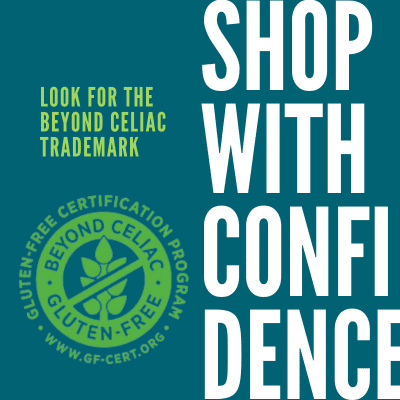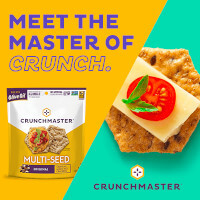Anticipate the challenges and work with teachers to help your gluten-free toddler stay safe.
By Beyond Celiac volunteer Annsley Klehr
[Read more about Annsley in “My Gluten-Free and Soy-Free World“]
As the school year rolls around, kids’ lunches are being made, and lunchboxes are being packed. It can be a stressful time for a parent of a child who is gluten-free and for the child. Here is how I decided to keep my child gluten-free and how that played out in school:
Having celiac myself and then having a child gave me one more person to worry about. Before I put a drop of food in her mouth, I sought genetic testing. If she didn’t have HLA-DQ2 or HLA-DQ8 (the main genes associated with celiac disease) then I wasn’t going to worry. . . But wait!
She came up negative for the celiac genes, but the tests also indicated she was prone to gluten sensitivity. That got a bit confusing. I decided that in my house (and in her lunchbox, too, for that matter), we were going to have a gluten-free household. I felt reassured by my decision and decided that when she got older, and if she wanted to experiment, she could try eating gluten and see what her body told her. That seemed simple enough, until I sent her to school for the first time, and I wasn’t there to monitor what went in her mouth.
Preschool Day 1
In my head: I’m so excited to be dropping off my 1 ½-year-old daughter. I’ll get a whole morning to myself – Yippee! I have nothing to worry about. I have packed her own snack and lunch.
Reality: I bring her to the table to sit down and have a snack with her friend. The snack gets put in front of them on the table. There are gluten crumbs everywhere. She just reached her hand out to grab someone else’s food.(Can you sense my panic?) My day and life just got very difficult. I will make sure her snack comes from her lunchbox,I vowed.
I quickly learned that in a typical day in preschool, the kids eat their lunches on a shared table. Then the teachers collect the lunches when the kids are done and puts leftovers back in their appropriate containers. It seems organized, but for someone with celiac disease, it would be quite a challenge to get through one day of preschool feeling good or even functioning.
In addition, the lunch containers are now contaminated, and so is everything else my daughter eats. This was a good experience for me, as it alerted me to cross-contamination risks and helped me educate the school. (Mostly, I have to worry about me. Gluten may be on my daughter’s hands and in her food containers. I have learned never to eat her leftovers!)
Preschool Day 2
In my head: Day 1 was a test, so Day 2 will have to be better since I have informed the teachers that she must eat her own snack, from her own lunchbox, on her own plate. All problems solved.
Reality: I come to pick her up and the teacher informs me that she was handed her own snack and plate. It was all going swimmingly until . . . “Your daughter is a food poacher,” the teacher said. I asked if the other kids minded that she grabbed their snack. “Well, when the kids began to leave the table, your daughter would go over to their spot without them seeing.” Oh great, my daughter is smart, conniving AND patient; she must get that from her dad.I asked the teacher if we could figure out a better solution. She was very agreeable. At least communication seemed to be going well.
To ease other parents/caretakers into the gluten-free rhythms of preschool, I have listed a few life-saving tips:
Tip #1: Come Lunchbox Prepared – Make sure you pack your child his/her own plate, utensils, drink, and napkin. Make sure these are labeled with your child’s name on them. If you need to, ask the teacher to set aside a special table so your child can have plenty of room between his/her plate and the next child’s.
Tip #2: Don’t Forget to Educate – Make sure you explain (a handwritten note is best) that your child cannot eat gluten, what that means, and specifically that NO other food can touch your child’s food. If the teachers are helping to serve the food, make sure they either wash their hands or put on new gloves when handling your child’s food.
Tip #3: Inform Your Child – No matter how young your child is, he/she is never too young to learn about gluten-free safety. I explain to my daughter that when she eats bread, it can make her sick. (I even go as far as to show her what normal and abnormal bowel movements look like after she has eaten. At 2 she will now tell me what she can and can’t eat.)
Tip #4: Always Pack a Small Treat – Always come with some small treat for your child, so when the other kids are munching away on some mouth-watering gluten-containing treat, you have a perfect substitute. A treat can be anything from raisins to pretzels to homemade breads/muffins. I often have my daughter choose what she wants her special treat to be, that way she doesn’t go grabbing from other children. (I often brief her on any gluten risks that I know of ahead of time.)
Tip #5: Mastering Snack Time – A few options: 1) Work with the teacher to plan a gluten-free alternative for every snack. So, if the school gives out Cheerios, you give a box of gluten-free O’s to the teachers to hand out at snack so your child doesn’t know the difference. 2) Request that snacks come from the kids’ lunches instead of from the school.
Preschool Day 3
In my head: Oh, good. This is going to have to be a better day, because we have come up with a better solution. Every child will get snacks from his/her own lunchbox so my child does not stand out.
Reality: What a great day! My child ate her own snack and her own food on her own plate. She did not feel the need to take from others, because all the snacks were different and didn’t come from the teacher. No cross-contamination today! I feel lucky to have such wonderful teachers who will work with me.
Just remember, communication is the key to being gluten-free.
Happy Back-to-School!
Related Content:


